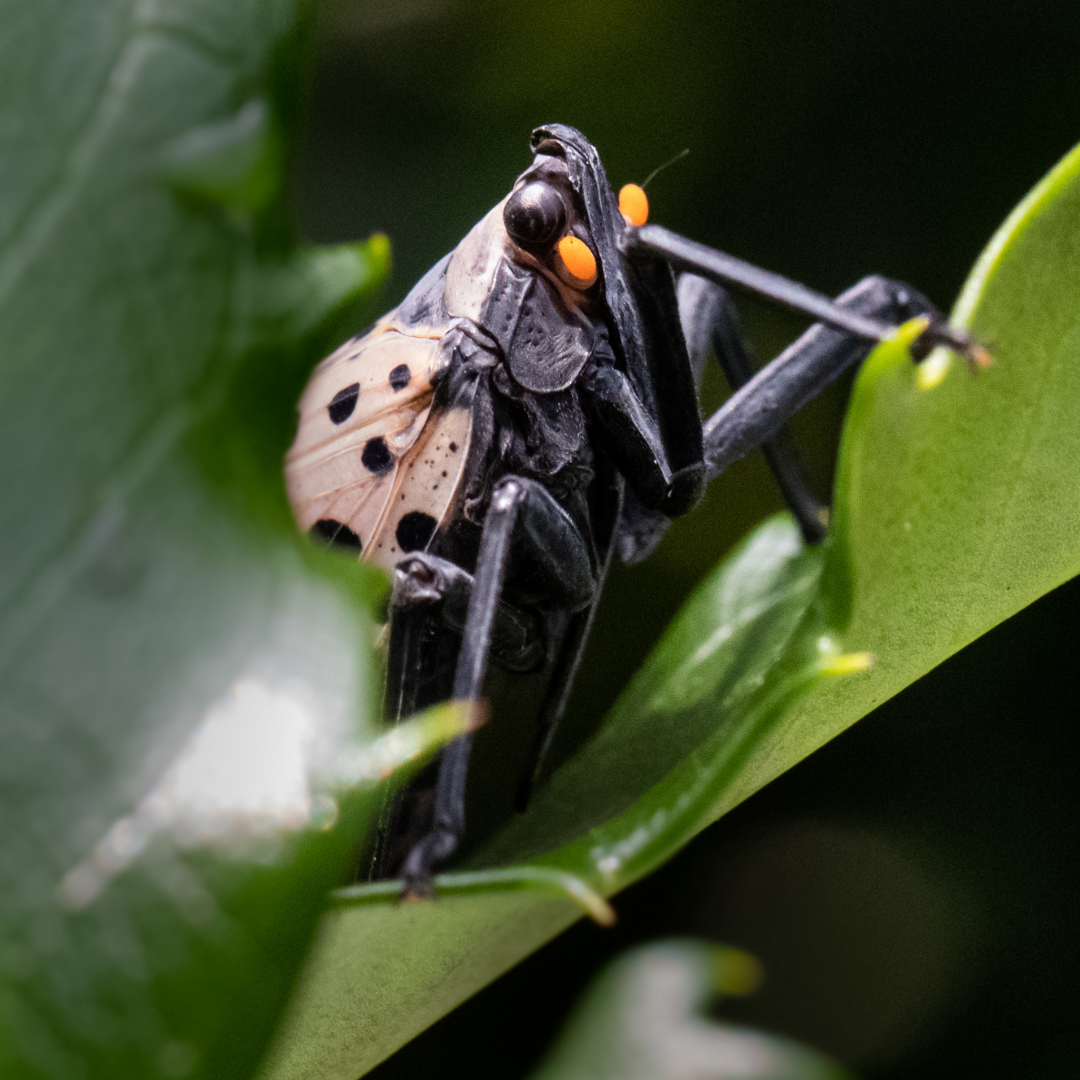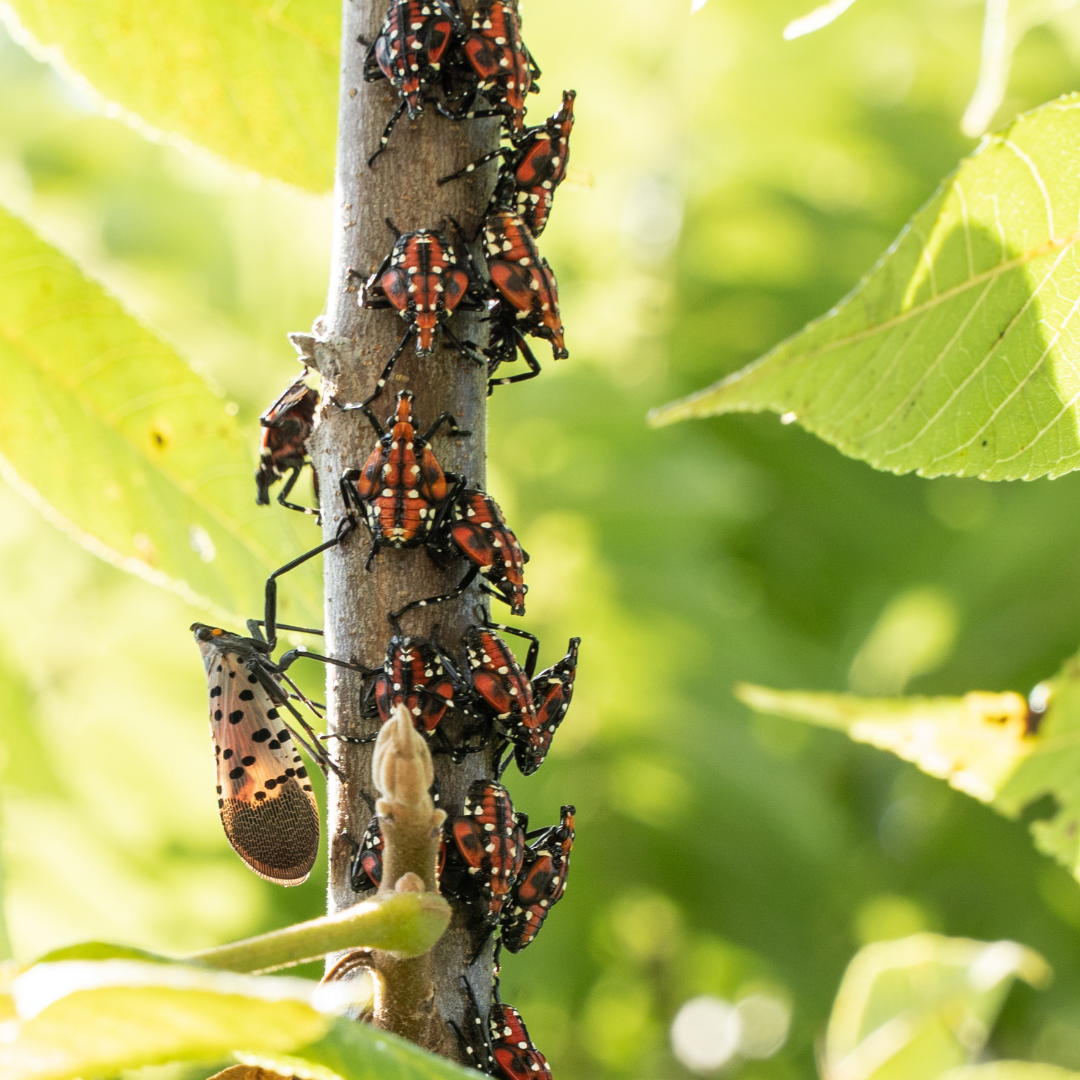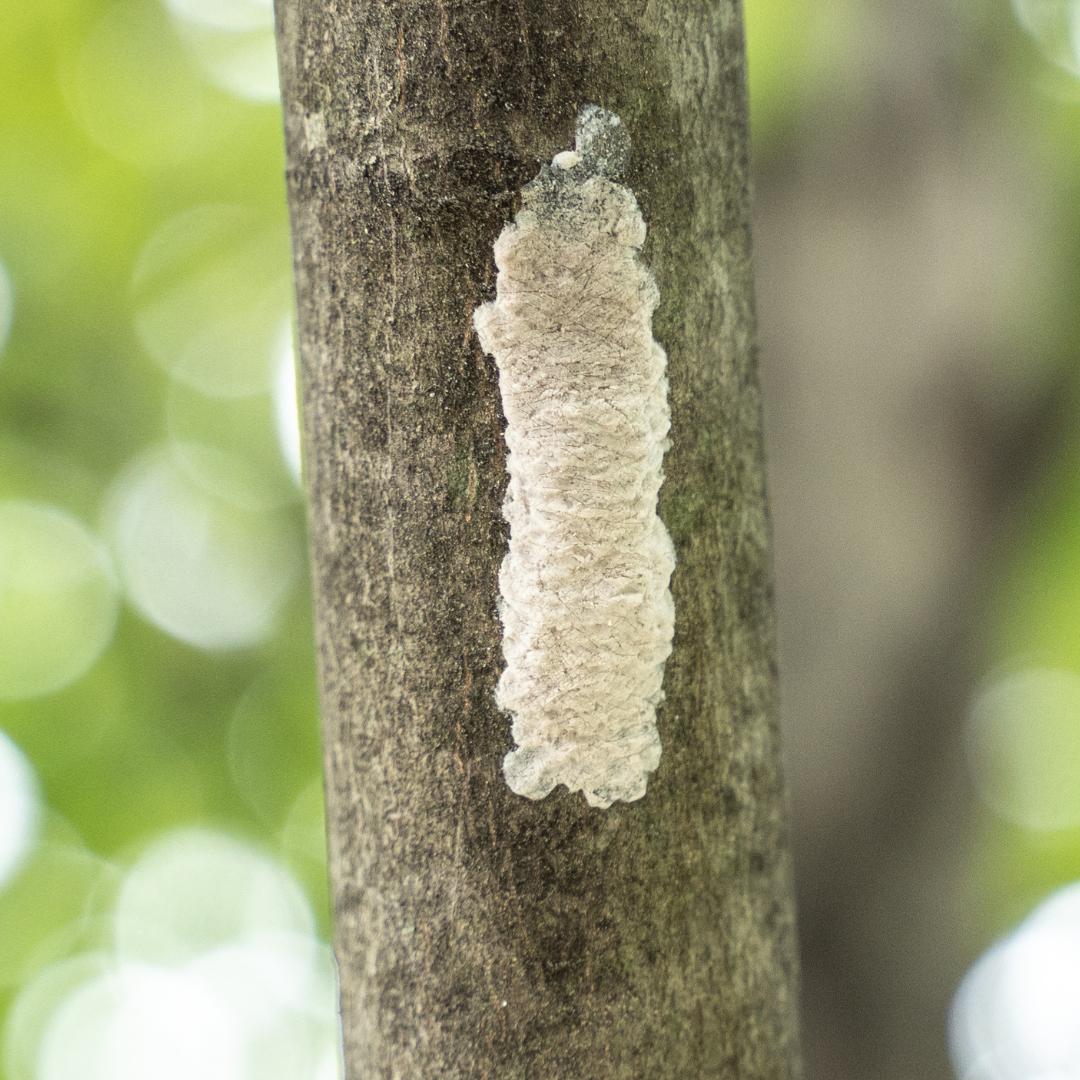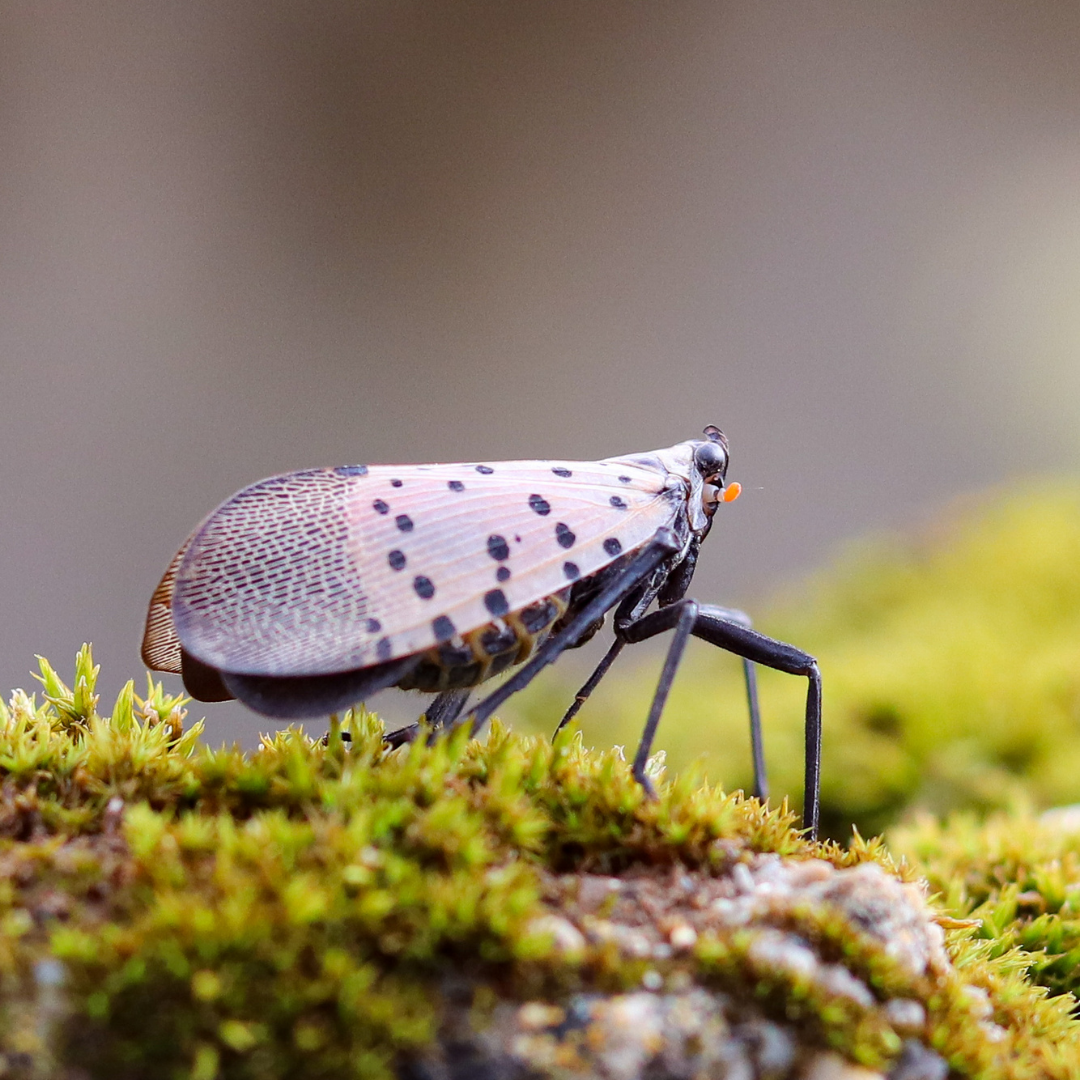Blog
Spotting a Disaster Before It Hops into Our Backyards
.png)
by Carolyn Ramseur, Conservation Apprentice
What do you know of the Spotted Lanternfly (aka Lucorma delicatula or SLF for short)?
If you follow any regular invasive species blogs or environmental news, you may have heard of this red and black spotted pesky insect. A Native to China, India, and Vietnam, this planthopper found its way to Pennsylvania in 2014, likely from hidden egg masses on imported stone from China.
Since its arrival, SLF has spread like a very well-fueled wildfire wreaking havoc on agriculture, grape vines, and hardwood forests. Due to its variety of habitat, rapid reproduction, devastating effects, and diverse appetite (a documented 103 species of trees are on their menu!) the SLF quickly garnered its title of “The worst invasive species in 150 years" by NPR.

A member of the Genus Hemiptera or True Bugs, the Spotted Lanternfly is one out of a group of approximately 80,000 species, that includes insects such as bed bugs, aphids, cicadas and leafhoppers. All Hemiptera have piercing/sucking mouth parts, compound eyes, and wings that overlap at rest.
Many Hemipterans are known for both their pesky tendencies and relied on for controlling said pests through predation (a real circle of life if you will...). Spotted lanternfly definitely falls into the former—it's a true nuisance.
Using their specialized mouthparts, SLF pierce the outer bark of host trees and drink their sap. En mass feeding by adults causes large amounts of stress, dieback, and wilting in trees. The bug's nymphs add to the mess by creating masses of honeydew by-product that can lead to an overgrowth of black sooty mold and loss of photosynthetic abilities.
And, because SLF can complete all life cycle stages on the same host, the total damage leaves host plants highly vulnerable to the world around them.

SLF adults’ preferred host plant is an invasive species as well - Tree of Heaven. But really any sap bearing tree will do.
In residential areas it is known commonly to feed on black walnut, maples of any kind, tulip poplar, and black cherry. And I can’t help but think of our precious sugar maples and pawpaw trees here at the Nature Center! Two of our seasonal favorites that could fall prey to the SLF if it has the chance to establish in our very own backyard.

Since SLF’s introduction in 2014, it has established populations all over Pennsylvania, Delaware, New Jersey, and northern Virginia, while individuals have also been spotted in 13 states ranging west to east coasts.
Unfortunately, in October 2020, Ohio joined the list of states with established populations. Cuyahoga and Jefferson Counties both have confirmed populations of the bug and are considered quarantine areas.
This means we all need to be vigilant when purchasing wood, wood commodities, plants, and other outdoor surfaces from these areas. Eggs are known to be laid on a range of hard surfaces, from rocks and wood to vehicles and transport boxes.
So, what can you do? Stay observant. Learn to identify all life stages. Report any sightings. Evaluate all purchased outdoor goods and wood products. If you see a spotted lanternfly, take a photo and submit it to your local extension office, then kill it—immediately.
Be safe out there protecting our local ecology & biodiversity!

Here’s a list of resources to help you be the best lookout possible:
- Ohio Department of Agriculture: How to report sightings, who to contact, and specific tips on what to do
- How to Identify Spotted Lanternfly video by the New York State Department of Environmental Conservation
- Overview of Spotted Lanternfly Life Stages by the St. Lawrence—Eastern Lake Ontario Partnership For Regional Invasive Species Management
- Spotted Lanternfly Distribution Map (as of 2/22)